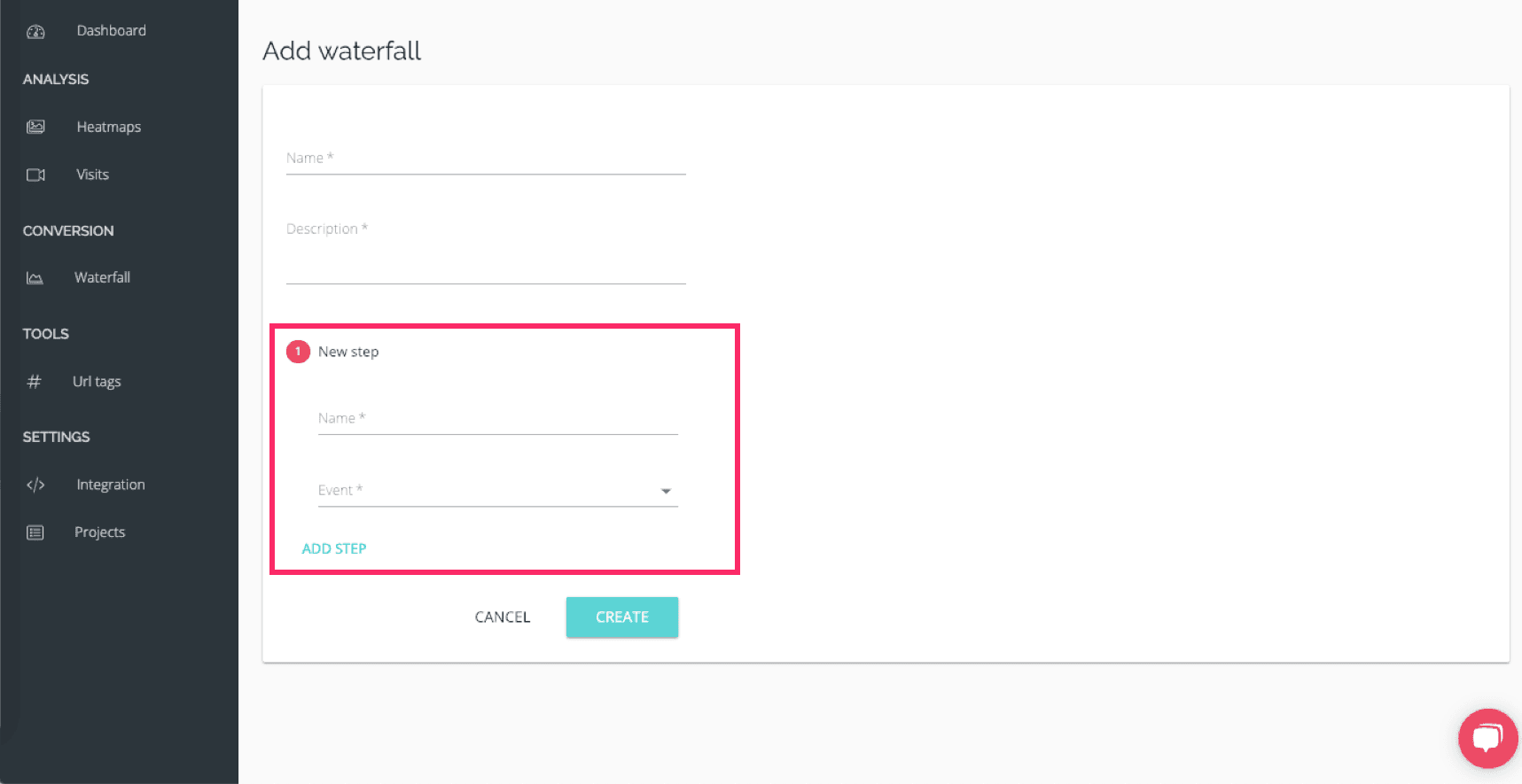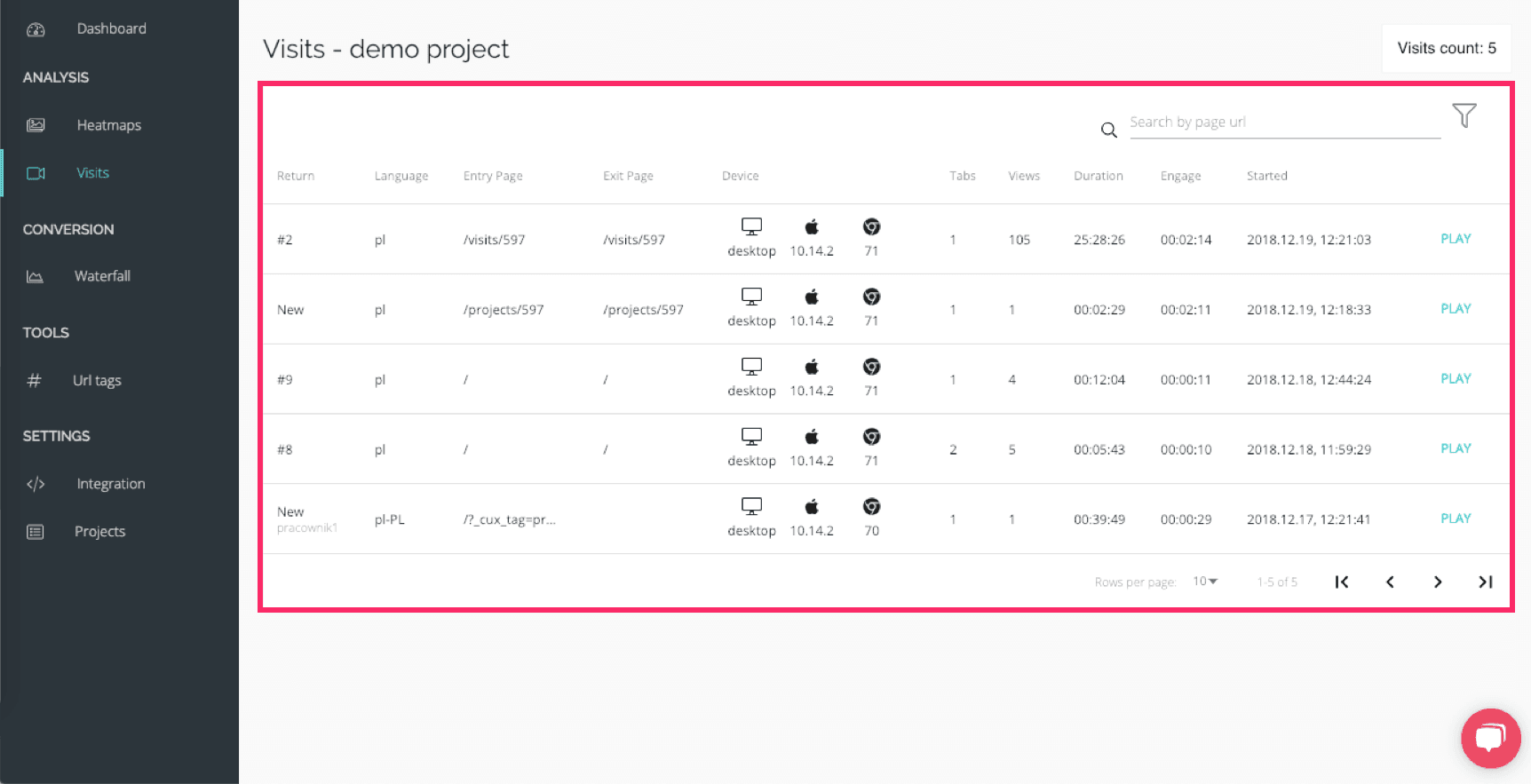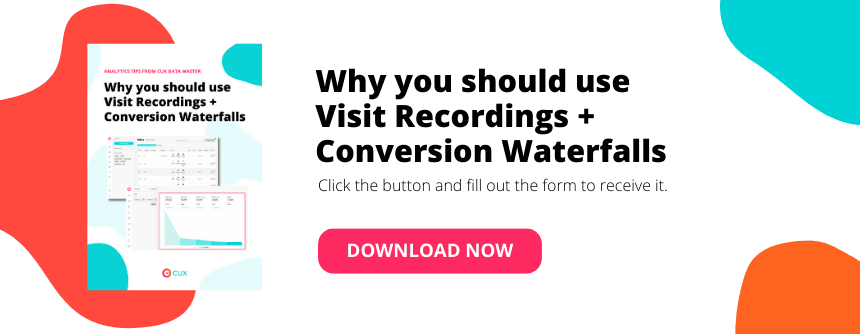May 26, 2022
5 min read
Waterfall conversion – the new quality of measuring and calculating the conversion rate
Users don’t consume content linear way. Users are chaotic and really often not rational.
What is Conversion Waterfall?
Conversion Waterfalls allow you to analyze every single action (event) no matter if it is click, scroll, input fill or form submit. We can say for sure, it is the most powerful feature of CUX. Our goal was to build something simple but deeply advanced at the same time. And we did it. Till now, you needed developer involved, now you have it in CUX for DIY 🙂
To make this whole process easier for you, we’ve prepared a guide to walk you through the feature, you’ll find some important tips below based on our experience. Let’s start it and be one step further than your competitors.
How to configure and calculate Conversion Waterfall step by step?
1. Create a new Waterfall

As the waterfall conversion ratios may be measured in many different ways be sure you know what is the goal for the specific waterfall, e.g. form submits, sales, new account registration etc. You can write it down as a Description to be sure what are you looking on, in case you’ll have few similar waterfalls.

2. Define and add the steps

Doesn’t matter if you want to add just a few steps or track how users fill out the long form on your website.
a) type a name

b) choose an event

What are the events?
About the traffic –measure conversion based on where users come from or what pages/subpages they load
-
page load – till now you probably used only URL based conversion funnel. Page load is all about it – it shows how many times the specific URL address was loaded. As a value type the whole URL or just a unique part of it.
-
referrer – allows you to track users incoming from a specific address (e.g. social media, search engine etc.). As a value type the whole URL or just a unique part of it.
About the pointer – measure conversion based on action users takes on your websites
- click – allows you to point specific elements (buttons, links, pictures etc.) users click to aim the goal on your website. As a value type XPath of the specific element.
TIP: If you’ve never done it before go to your website click right on the element and choose “Inspect”. In the console, you’ll find HTML code. Find class or id parameter and copy/paste value to XPath field. CUX will in a moment suggest you the right element.

- scroll – allows you to track users who scrolled your website by specific, more/less than the number of pixels. As a value type preferred number of pixels
About the forms – measure conversion based on filling out forms
- focus in – user clicked or tabbed through the form. As a value type XPath of this specific field.
- changed – user typed something or changed the value of form field. As a value type XPath of this specific field.
- focus out – user As a value type XPath of this specific field.
- submit – user submitted your form. As a value type XPath of this specific field.
IMPORTANT may not work if you have any opt-ins or captcha to click. To be sure that form was successfully submitted as a next form step ad the page load – URL with form submission confirmation screen
Other – custom event you can send to us based on the specific business model
Repeat it for every step you want to add.
3. You’ve created the waterfall!
As soon as you add all the steps you’re all set! The waterfall will be recalculated in a real-time, so be aware that the results can change every few minutes, depends on the traffic on your website. Thanks to that you’re able to see the results of possible changes applied immediately.

How to analyze Conversion Waterfalls?
On the waterfall chart, you’ll see the percentage of users who have made to the next step and finally who achieved the goal you mean by conversion. Before you used conversion rate optimization tools that will be it, you’ll have to find the solutions for the drop out by yourself. But thankfully we’re here and you can go deeper with the analysis by clicking on this small (View) link on each step.

As soon as you click there you’ll be redirected to the filtered list of visits during which users drop out. Just watch a few of them, look for the pattern and the reason for the drop will come out.

Now you probably have your quick win to improve this step of user journey and the UX in general!

